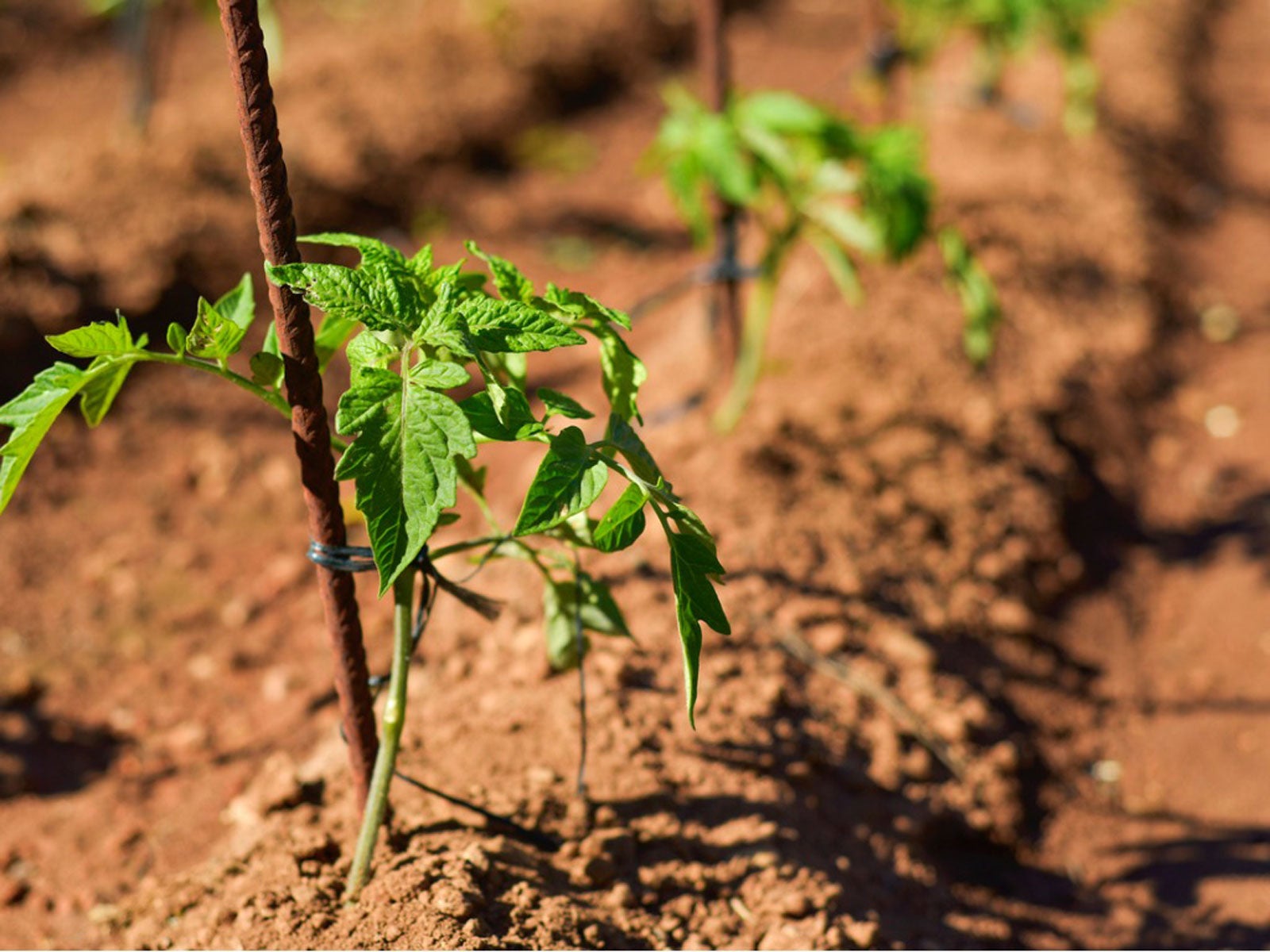Spacing Tomato Plants: How To Space Tomato Plants

Tomatoes must be set in the garden when the weather and soil has warmed to over 60 degrees F. (16 C.) for optimal growth. Not only is temperature an important growth factor, but the spacing for tomato plants can affect their performance as well. So how to space tomato plants for maximum growth potential in the home garden? Read on to learn more.
More About Tomatoes
The tomato isn't only the most popular crop grown in the home garden but is arguably the most versatile culinary used whether stewed, roasted, pureed, fresh, dried, or even smoked. Tomatoes are rich in vitamins A and C, low in calories, and a source of lycopene (the “red” in tomatoes), which has been tapped as a cancer fighting agent. Typically, the space requirements for tomatoes are minimal, with the fruit being easy to grow and adaptable to many climates.
How to Space Tomato Plants
When transplanting tomato plants, set the plant's root ball a little deeper into a hole or trench dug into the garden than originally grown in its pot. The spacing of tomato plants is an important component for healthy, productive plants. The correct tomato plant spacing is dependent upon which variety of tomato is being grown. Generally speaking, the ideal spacing for tomato plants is between 24 and 36 inches (61-91 cm.) apart. Spacing tomato plants any closer than 24 inches (61 cm.) will reduce air circulation around the plants and may result in disease. You also want to enable light to penetrate to the lower leaves of the plants, so proper spacing is crucial. Large vine producing tomatoes should be spaced 36 inches (91 cm.) apart and rows should be space about 4 to 5 feet (1-1.5 m.) apart.
Gardening tips, videos, info and more delivered right to your inbox!
Sign up for the Gardening Know How newsletter today and receive a free copy of our e-book "How to Grow Delicious Tomatoes".

Amy Grant has been gardening for 30 years and writing for 15. A professional chef and caterer, Amy's area of expertise is culinary gardening.
-
 Zinnias On Repeat: 10 Glorious Cut-And-Come-Again Varieties For Endless Summer Bouquets
Zinnias On Repeat: 10 Glorious Cut-And-Come-Again Varieties For Endless Summer BouquetsThese zinnia varieties keep giving all summer, making them the perfect choice for dedicated cutting gardens – or just the occasional homegrown bouquet.
By Ellen Wells
-
 Create A Romantic Garden Straight Out Of Bridgerton: Regency Era Romance In Your Garden
Create A Romantic Garden Straight Out Of Bridgerton: Regency Era Romance In Your GardenTry some romantic garden ideas straight out of Bridgerton. Flowers and gardens in the Regency era were lush and charming and you can get the same look!
By Bonnie L. Grant